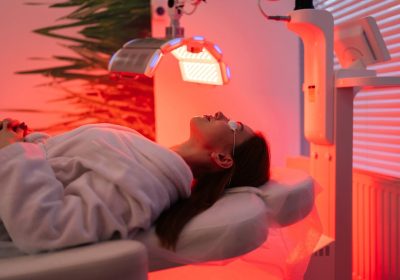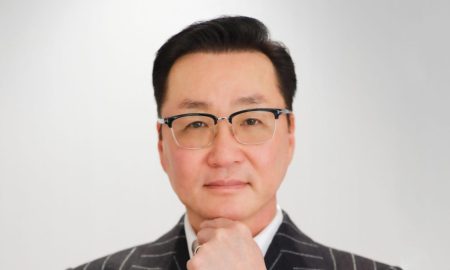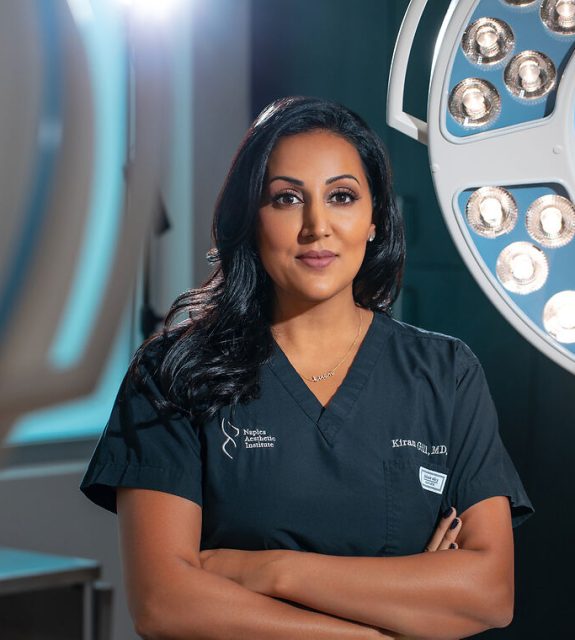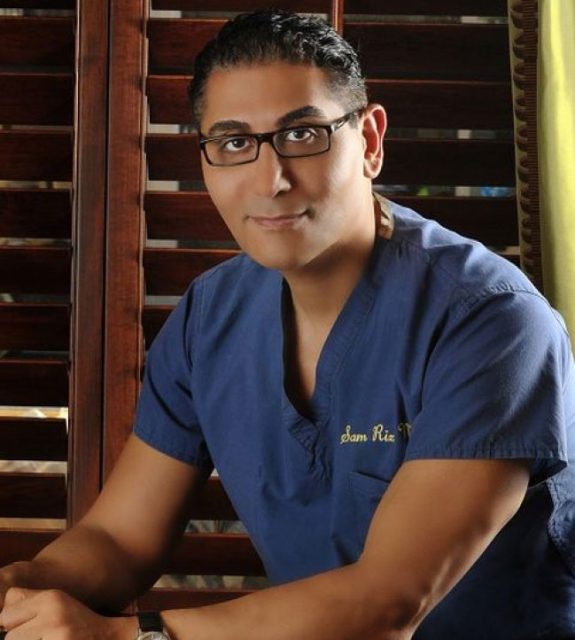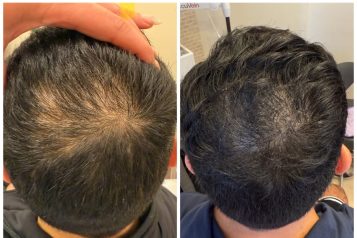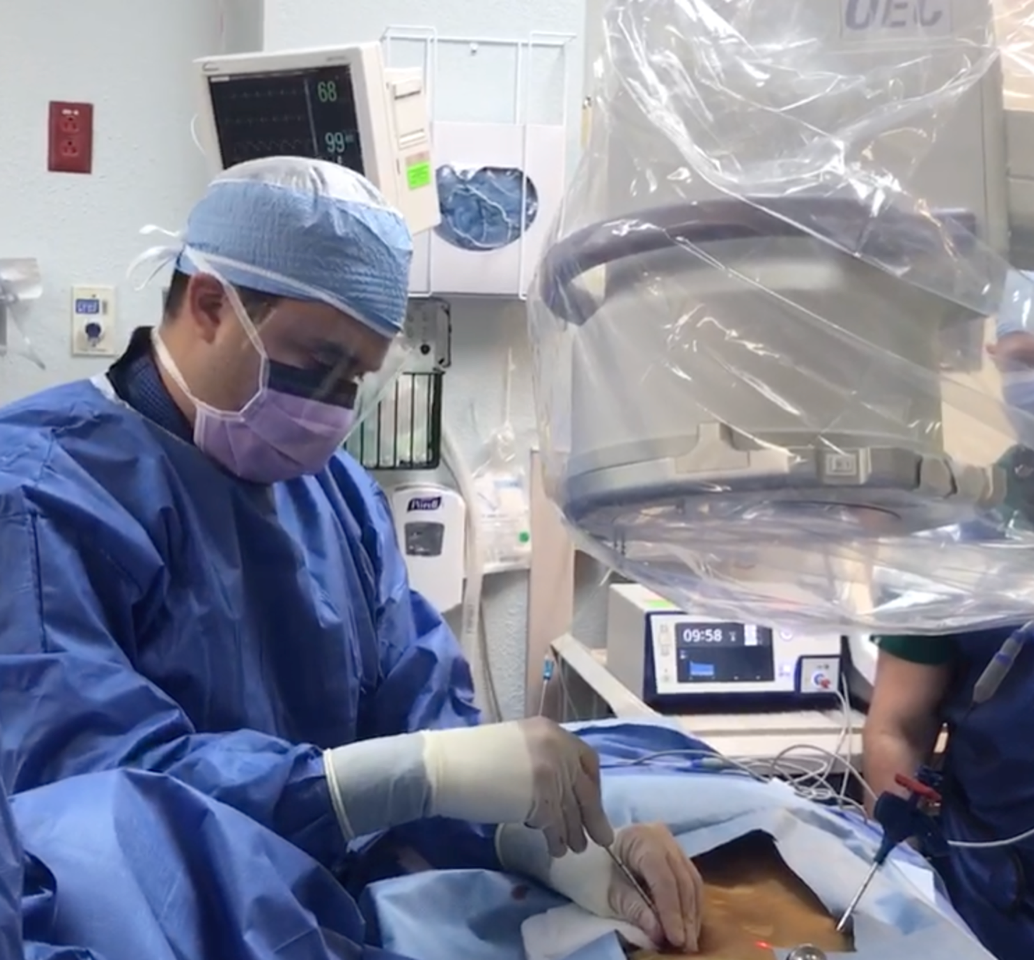
The renowned South Florida-based medical practice, Cantor Spine Institute, specializes in holistic approaches in spinal care. Dedicated in delivering the best results to patients, this team of four doctors including Dr. Anthony Giuffrida, consistently align their goals with that of their patients. Dr. Giuffrida sat down with Haute Beauty to discuss the innovative Intracept procedure and how it is pioneering the way physicians are treating patients with lower back problems in the future.
How did you grow to become the first and only physician in South Florida to offer the Intracept procedure?
Dr. Giuffrida: I grew up in upstate New York and went to medical school in Syracuse, followed by residency in Albany. After that, I moved to Birmingham, Alabama to complete an Interventional Spine and Sports fellowship. This is where I was introduced to the Intracept procedure. I was fortunate enough to be in on the first ever commercial case last June. We went to dinner after the case with some of the representatives from the company and spoke with them about how I was moving to South Florida and I would like to start doing this procedure down there. Luckily my fellowship director had a lot of faith in me and my skill and he pretty much said, “hey, teach him how to do this, and he’ll be good at it.” It’s always, “Know the right people, be in the right place, have good skills, work hard and good things happen.” So, I came down to South Florida, met with a local rep, got trained in Dallas, and within a few months we were up and running doing the procedure. In the last 6 months we have performed over 10 procedures and we have about 20 patients waiting to get the procedure at this time. It’s going strong and we are in a very exciting time. We have a chance to change how back pain is treated from years to come.
Can you explain how the procedure works?
Dr. Giuffrida: It’s for patients with lower back pain. What we do is, access the nerve that’s inside the vertebrae, so inside the bones of your back. All that nerve does, its only function, is to tell you that you have back pain. It doesn’t do anything else, it doesn’t control any muscles, it just tells you have back pain. So, using different access tools, we get a probe right on to that nerve, and we burn the nerve with radiofrequency. And once we kill the nerve with the radiofrequency it no longer tells you have back pain. Most of the limitation of lower back pain is because you have pain. If you’re not feeling this pain you’re able to get back to golfing, getting on your boat, playing with your kids, etc.
The nice thing is, five years ago, doctors used to do a fusion surgery to stop the pain in your back. The problem with fusions is that is 5-10 years down the road, patients end up with other lower back problems. Sometimes even just 3-5 years after surgery. The nice thing about this procedure is that, I don’t leave anything inside of you, no screws, no rods. I go in, burn the nerve, put two little bandages on your back at the end of the procedure, and you are good to go home the same day and pain free. It is very impressive. For example, one of the patients that underwent the procedure, is a family member of someone in our office. He had back pains for over five years. I did the procedure, and he was at the office holiday party that night. So, he didn’t really listen to doctors’ orders saying to take it easy for at least 24 hours! But he said he was feeling great, and he’s been doing amazing ever since. Even as a pain physician, it is changing the way we treat backs. Which is exciting because we haven’t had good ways to really fix backs without messing people up in the long run.
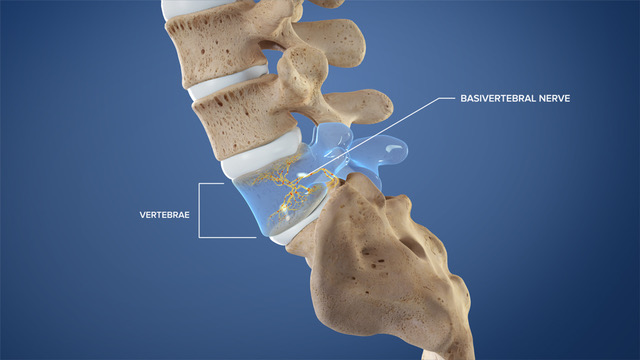
What patients would qualify for this procedure?
Dr. Giuffrida: Patients that have had at least six months of lower back pain, at least six months of conservative treatments such as taking an anti-inflammatory, taking a muscle relaxer, trying some physical therapy, chiropractor care, acupuncture, massage, etc. We always try to get rid of the pain without the procedure. It’s always safer to not do a procedure if you don’t have to. And lastly, patients also have to have certain findings in their MRI. They have to have Modic changes, which is inflammation seen on their MRI, in the lower back next to the disc. So that’s the three indications, currently. You also have to be careful in patients with osteoporosis, even though that’s not a total contraindication, I don’t want to cause a fracture in their bones. People with soft bones, you have to be careful. Have I done this procedure on patients with osteoporosis? Yes. Do I like to? Not really.
How long do results typically last?
Dr. Giuffrida: Studies are 5-6 years out now, these studies are showing 80-100% of relief for the patients. And the best part is that the relief is long lasting, the nerve doesn’t regrow. It’s not something you have to redo in a year or five years.
Are there any follow up procedures necessary?
Dr. Giuffrida: I follow-up with patients about ten days after the procedure to see how they’re doing, making sure they’re healing okay. Those two little poke holes that I put bandages over, I want to make sure that they’re fine. They heel so quickly I sometimes can’t even find them. In all the patients I’ve seen, I haven’t done a single procedure afterwards. One guy, I saw about ten days after procedure, I haven’t seen him since. He called me once just to say hi and that he’s doing great. The whole goal is to not have to do the procedure again.
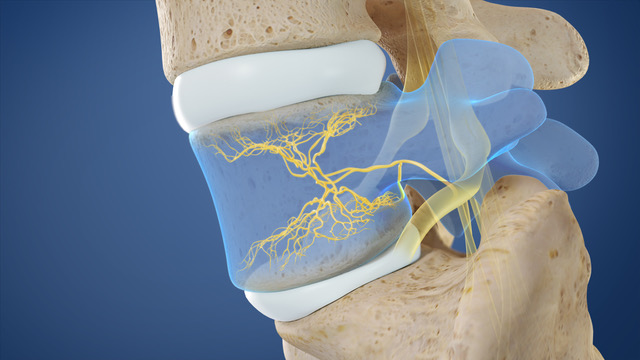
How does this procedure compare to other spinal treatments?
Dr. Giuffrida: Compared to its alternative, which is a spinal fusion, it’s much better because this is an outpatient procedure. Its only moderate sedation, you don’t have to get full sedation, and you go home within a few hours of the procedure being done. Afterwards, I tell patients that there are no screws, no rods, nothing you have to worry about that is inside of you. Nothing can get infected, nothing can break off, nothing is misplaced. Every single bone in our back is meant to be there for a reason. Every bone is meant to move in a certain way. And when you fuse, you change the physics and dynamics of how the forces go through the back. This procedure doesn’t do that. This maintains your normal architecture, the muscles are in tack, no muscles are taken out, usually when they do fusions, they take out some muscles, that were there for a reason. With this procedure, everything is still there, and nothing is added. It’s still your back, just pain free. Lastly, let’s say something happens 10 years from now, and you need to get surgery, you can still have surgery, it doesn’t burn any bridges for anything in your life. You can still have MRI’s, etc. We’re trying to fight spinal treatments here, it’s an antiquated treatment, it’s the only option we had for a long time. When you knee starts to hurt, we can do a knee replacement, you can’t do a spine replacement. This is a good option. Our patients are our best advocates.
For more information on this procedure, please visit CantorSpine.com
For more information, visit Cantor Spine Institute - MOVED TO MD MEMBERS's social media:





